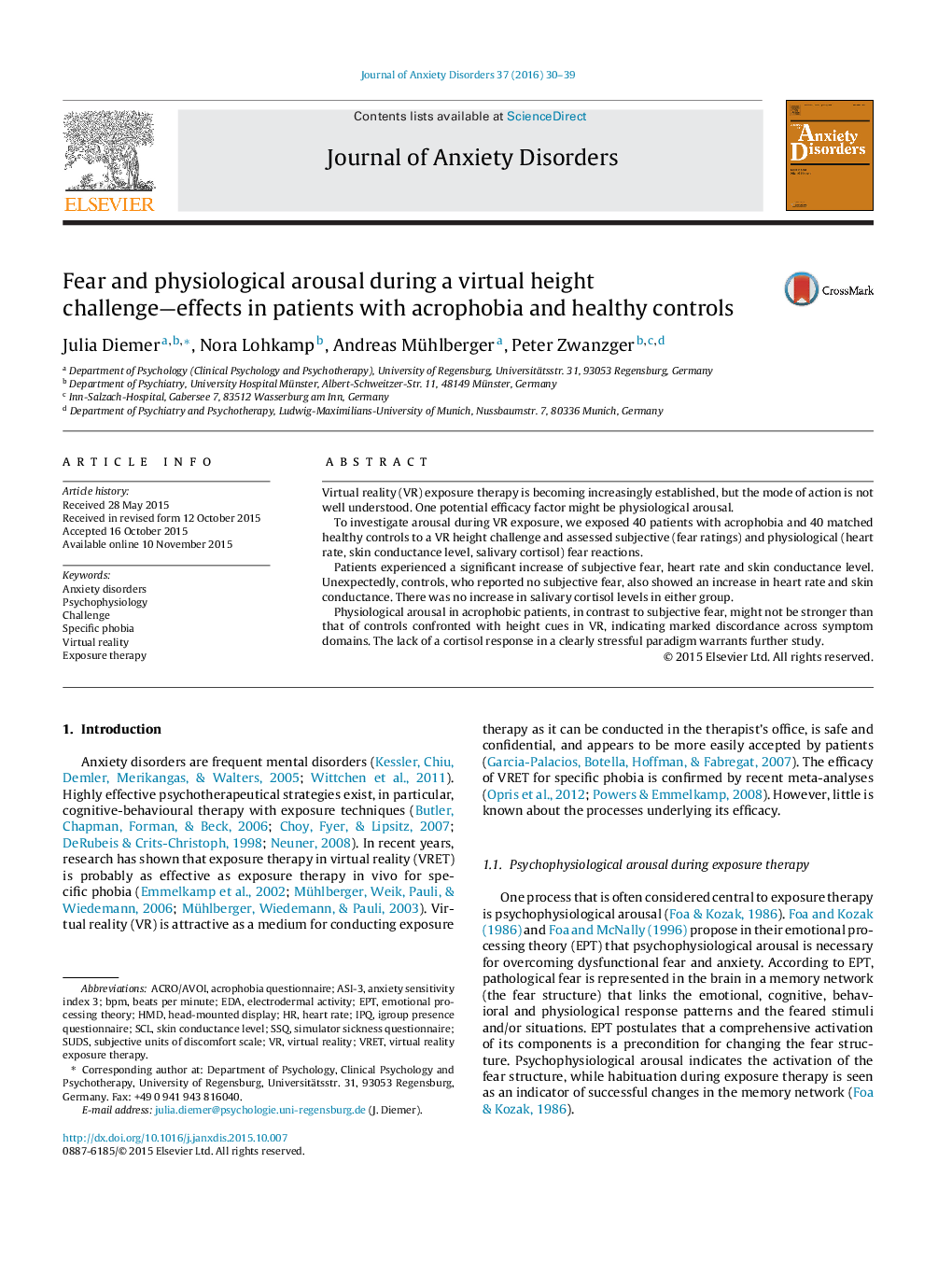| Article ID | Journal | Published Year | Pages | File Type |
|---|---|---|---|---|
| 909222 | Journal of Anxiety Disorders | 2016 | 10 Pages |
•Only phobic patients report fear in a virtual reality height challenge.•Both patients and controls show mild to moderate physiological arousal.•Neither group experiences an increase in salivary cortisol.•Our results indicate a marked discordance of symptoms across anxiety domains.
Virtual reality (VR) exposure therapy is becoming increasingly established, but the mode of action is not well understood. One potential efficacy factor might be physiological arousal.To investigate arousal during VR exposure, we exposed 40 patients with acrophobia and 40 matched healthy controls to a VR height challenge and assessed subjective (fear ratings) and physiological (heart rate, skin conductance level, salivary cortisol) fear reactions.Patients experienced a significant increase of subjective fear, heart rate and skin conductance level. Unexpectedly, controls, who reported no subjective fear, also showed an increase in heart rate and skin conductance. There was no increase in salivary cortisol levels in either group.Physiological arousal in acrophobic patients, in contrast to subjective fear, might not be stronger than that of controls confronted with height cues in VR, indicating marked discordance across symptom domains. The lack of a cortisol response in a clearly stressful paradigm warrants further study.
